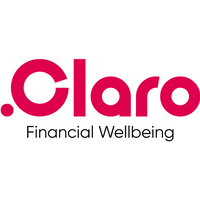5 communication tips to engage employees in company culture
The key to effective communication between an organisation and its employees is simple – know exactly what you’re saying and who you’re saying it to.
While a one-size-fits-all approach can often be tricky to master, so long as your message is clear, authentic and relevant, the rest should fall into place. Here are five essential tips to ensure your company is engaging current and potential employees in its culture.
1. Be clear on your company’s culture
The organisation’s shared set of values, beliefs and behaviours need to have ease of access to create familiarity, along with everyday evidence of implementation.
With practices like wellbeing washing becoming widespread, it’s easy to fall into the trap of only seeming to care about certain aspects of company culture – such as mental, physical and financial health support – when it’s trendy. It should be an ongoing effort motivated by a desire to truly help employees, rather than trying to score PR brownie points.
2. Use an accessible medium to reach people
A recent report by organisational communications company Ragan claims that an intranet can no longer meet the needs of many modern companies.
Logically, your message stands a far better chance at finding the right people in the places they frequent. If your employees are deskless (i.e. without access to a computer), be sure to take that into consideration.
Make life easier on your communications team by deciding on two or three core places to reach current and potential employees with your culture-themed messages. Whether it’s on social media, newsletters, notice boards, webinars or wherever the highest footfall lands, a good starting point is nailing down a widely accessible medium, optimising your content, and promoting and resharing it to reach as many as possible.
3. Replace outdated processes
The technological practices of the past - mailing, faxing - no longer apply in many respects, particularly when it comes to communicating company culture.
To keep up with advancements, you’ll need to regularly evaluate the successes and failures of your company’s communication methods using data collection techniques.
Whether it’s open rates, engagement stats or QR code scans, test, refresh and refine processes in accordance with efficiency and success rates. Stay on top of emerging trends and don’t be afraid to be among the first to try out new things.
4. Show appreciation for active engagement
Job site Indeed lists the advantages of workplace incentive schemes as including “increased productivity, loyal employees, boosted morale, increased motivation and improved collaboration”.
Whether it’s a reshare, query, response or suggestion, it’s good practice to reward those that are most engaged in your company’s culture. Authentic interest is a valuable thing and should be encouraged.
Similarly, purveyors of the company’s shared values should be recognised. Consider implementing a monthly recognition system that acknowledges those who are acting on the company’s values.
5. Encourage regular and honest feedback
A core part of any company’s culture rulebook is to listen to employees. During the interview process, ask potential employees what they value in a company’s culture, and how they feel about your efforts. Internally, get staff to submit culture suggestions on a regular basis.
Circulate surveys for key insights, and do your research. For example, Claro Wellbeing’s Workplace Today report found that 69% of UK employees felt their employer could do more to support their personal finances.
A strong solution is to offer a financial wellbeing benefit that empowers teams to make smarter decisions when it comes to their money. This promotes a workplace culture of caring about employees’ needs and overall wellbeing.
Culture is a crucial part of any company’s DNA. It sets you apart from the competition and creates a sense of belonging for employees, while drawing the attention of potential new ones.
Effectively communicating this culture is an ongoing effort. Using the above guidance, take some time to evaluate your company’s efforts and see where you can improve today. Then, revisit it again and again.
Supplied by REBA Associate Member, Claro Wellbeing
A financial wellbeing benefit to support your team where it matters most








